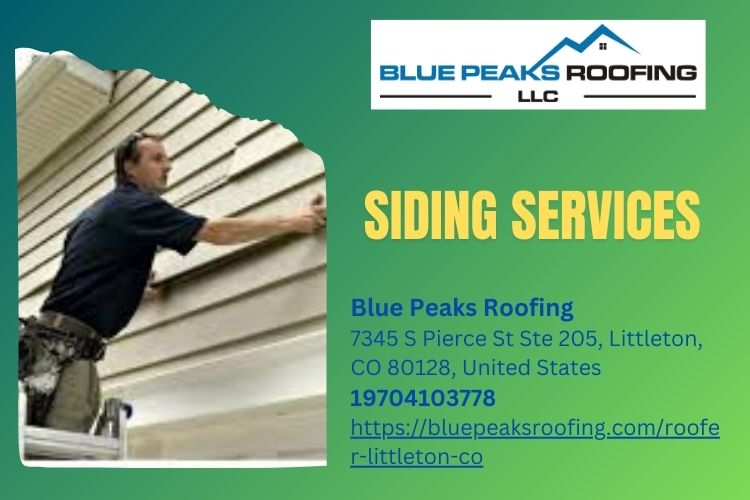When it comes to choosing the right roofing material for your home, the options can be overwhelming. With a variety of materials available, it’s essential to understand their features, benefits, and drawbacks. In this comprehensive guide by Blue Peaks Roofing, we will delve into the different types of roofing materials, helping you make an informed decision that suits your needs.
Understanding the Different Types of Roofing Materials – A Guide by Blue Peaks Roofing
Every homeowner wants a roof that not only enhances the aesthetic appeal of their property but also provides durability and longevity. The type of roofing material you select can significantly affect your home’s energy efficiency, maintenance requirements, and overall value. So let’s explore the various types of roofing materials available today.
1. Asphalt Shingles: The Most Popular Choice
Asphalt shingles are undoubtedly one of the most popular roofing materials in North America. Their affordability and ease of installation make them a favorite among homeowners.
1.1 Benefits of Asphalt Shingles
- Cost-Effective: They are one of the most budget-friendly options available. Variety: Available in numerous colors and styles. Easy Installation: Quick to install, reducing labor costs.
1.2 Drawbacks
- Lifespan: Typically last around 20-30 years. Weather Resistance: Not as durable in extreme weather conditions compared to other materials.
2. Metal Roofing: The Long-Lasting Option
Metal roofs have gained popularity in recent years due to their remarkable durability and energy efficiency.
2.1 Advantages of Metal Roofing
- Longevity: Can last 40 years or more with proper maintenance. Energy Efficiency: Reflects solar heat, helping to lower cooling costs.
2.2 Disadvantages
- Cost: Typically more expensive upfront than asphalt shingles. Noise: Can be noisy during rain or hail storms unless soundproofing measures are taken.
3. Clay Tiles: A Timeless Classic
Clay tiles are known for their distinctive appearance and long-lasting nature. They are often found in Mediterranean-style homes.

3.1 Pros of Clay Tiles
- Durability: Lasts over 100 years when properly maintained. Fire Resistant: Excellent choice for fire-prone areas.
3.2 Cons
- Weight: Heavier than other materials, which may require additional structural support. Costly Installation: Higher initial investment compared to asphalt shingles.
4. Slate Roofing: The Luxury Choice
Slate roofs offer unmatched elegance and durability but come at a premium price point.
4.1 Benefits of Slate Roofing
- Aesthetic Appeal: Elegant look that enhances property value. Longevity: Can last up to 200 years if maintained properly.
4.2 Drawbacks
- High Cost: One of the most expensive roofing materials on the market. Installation Complexity: Requires skilled labor for installation.
5. Wood Shakes: Natural Beauty
Wood shakes provide a rustic charm and natural beauty to any home while being environmentally friendly.
5.1 Advantages
- Insulation Properties: Excellent insulation helps maintain indoor temperatures.
5.2 Disadvantages
- Maintenance Needs: Requires regular maintenance to prevent rot and insect damage.
6. Synthetic Roofing Materials: Innovation at Its Best
Synthetic roofing products mimic traditional materials like slate or wood but often come with added benefits like lower weight and cost-effectiveness.

6.1 Benefits
- Mimics the look of high-end materials without the associated costs.
6.2 Downsides
Potentially less durable than traditional options depending on manufacturing quality.
FAQ Section
1. What is the best roofing material for my home?
The best roofing material depends on various factors such as climate, budget, and architectural style. Consult with local roofers like Blue Peaks Roofing for personalized advice tailored to your specific situation.
2. How long does each type of roofing material last?
Asphalt shingles typically last 20–30 years; metal roofs can last over 40 years; clay tiles can exceed 100 years; slate roofs may last up to 200 years; wood shakes usually last around 30 years; synthetic options vary widely based on material quality.
3. Are there eco-friendly roofing options available?
Yes! Many manufacturers now offer eco-friendly options such as recycled metal roofs or sustainably sourced wood shakes that minimize environmental impact while providing excellent performance.
4. How much does it cost to replace my roof?
The cost varies based on factors such as size, material choice, labor rates in your area (like Littleton CO), and any additional roofing services near me features you may want (such as skylights). Local roofers can provide estimates tailored specifically for you.
5. Do I need a permit for roof replacement?
Most municipalities require permits for roof replacements or major repairs—check with your local building department before starting any work!
6. How do I find reliable roofers near me?
Search online reviews or ask friends/family for recommendations when looking for "roofers near me." Local companies like Blue Peaks Roofing have established reputations within communities like Littleton CO.

Conclusion
Selecting the right roofing material is crucial for protecting your home while enhancing its curb appeal and value over time—especially when considering local conditions unique to areas like Littleton CO! By understanding different types available—from asphalt shingles to luxurious slate—you can make an informed decision that meets both aesthetic desires & practical needs alike!
For expert assistance tailored specifically towards your project needs—reach out today!
Contact Us
Blue Peaks Roofing
Address: 8000 S Lincoln St Ste #201, Littleton, CO 80122, United States
Phone: (970) 410-3778
By following this guide provided by Blue Peaks Roofing—the path towards finding ideal solutions has never been clearer!